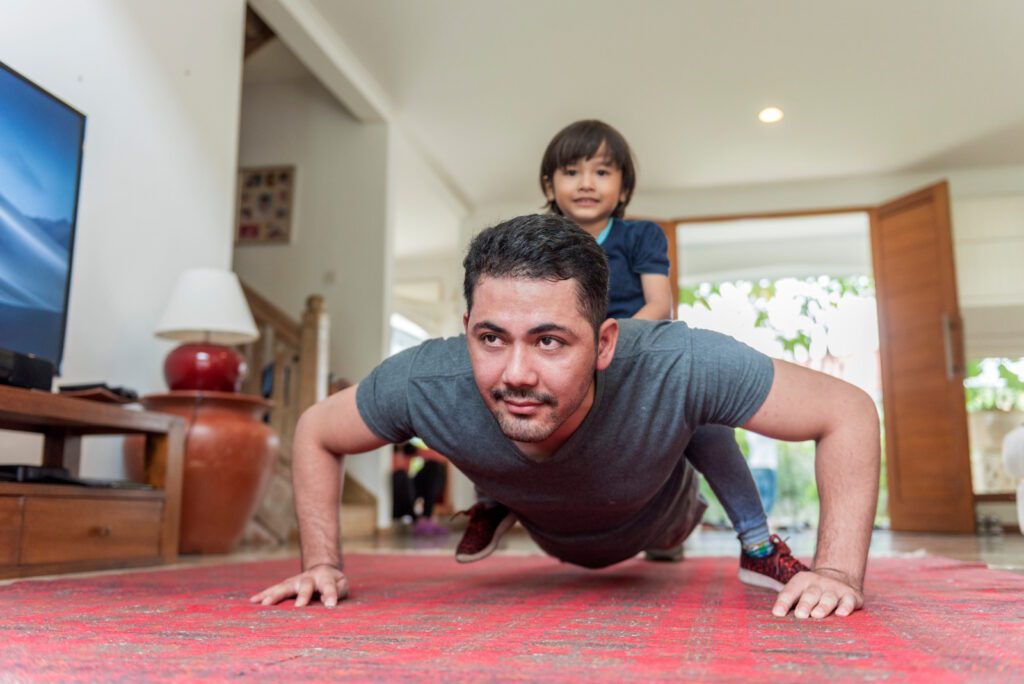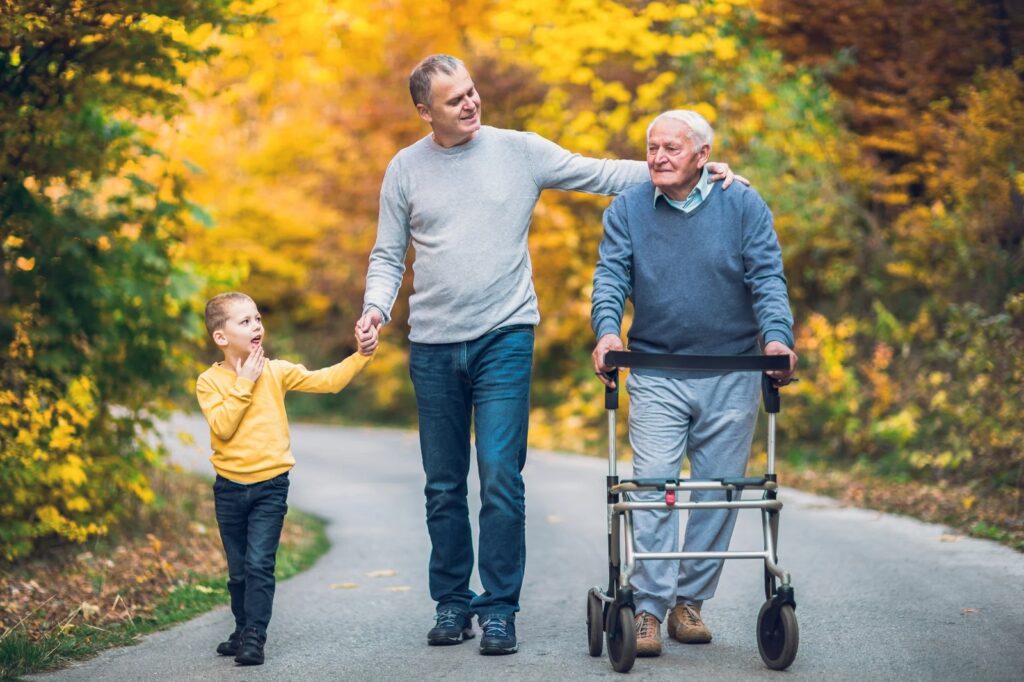Venous Disease Can Be Overlooked in Men’s Health
Author: StrideCare Internal Team

Men Have Venous Disease Too
Men need to be mindful of many health conditions and risks as they age. A few common ones that might pop up in conversation during June’s National Men’s Health Month include heart disease, diabetes, high blood pressure, strokes, and colon cancer. What you likely won’t hear a lot about is venous disease, because many associate conditions like varicose veins, spider veins, chronic venous insufficiency, restless leg syndrome, etc., with women. According to the Office on Women’s Health, twice as many women as men are affected by varicose veins alone. However, men certainly aren’t immune.
An average of one in every three adults—both men and women—over the age of 45 develop some form of vein disease. While those numbers largely favor women, there are still millions of men who suffer from vein disease. What’s alarming is that many of these men are more likely to ignore the condition, which can lead to more severe and life-altering complications if not treated quickly by a vascular and vein specialist.
Men, Are You Experiencing These Venous Disease Symptoms?
- Tired and heavy legs
- Swollen legs and feet
- Unsightly varicose veins
- Throbbing, achiness, or stabbing pain
- Cramping legs
- Itchy spider veins
- Numbness and tingling
- Prickling, pulling sensations
- Burning sensations
- Leg skin ulcers

Facts About Men and Venous Disease You May Not Know
Men’s Health Month is observed each June. In 1994, Congress created Men’s Health Week, which this year runs from June 12-18. In each case, the goal is to heighten the awareness of men’s health problems—many of which are largely preventable—and encourage early detection and treatment. While the focus is largely on cancer, heart disease, depression, etc., awareness of venous disease risks in men is gaining momentum.
When we say “venous disease” or vein disease, we are talking about the network of veins in your legs. Veins are a type of blood vessel that return deoxygenated blood from your organs to your heart. Your veins connect with other vessels that bring blood to organs throughout your body. The problem is that veins can age as we do and reach a point where they can’t do their job as efficiently as they once did. As a result, vein valves may malfunction, causing blood to flow backward in the wrong direction.
Think of this process like a large garden hose. When the hose is open and working, water flows freely. However, water cannot flow freely if there is a kink at any point in the hose. The same can be said for a man’s venous system. If any of the vein valves in a man’s legs become faulty, the result is poor blood flow, which results in the symptoms listed above.
While venous disease is more common in women, here are a few statistics about its impact on men.
Statistics About Men and Venous Disease
There are 11 million men between the ages of 40 and 80 in the United States with vein disease.
Studies have shown that only a small percentage of these men experience painful symptoms of venous disease. But when they do, it is likely to involve the deeper, less visible veins in the legs and includes serious complications such as blood clots and chronic venous ulcers. Blood clots in a deep leg vein are highly concerning because you no longer experience the occasional pain in your legs. You are dealing with a situation that is potentially fatal.
One of the leading causes of varicose veins and spider veins is a hormone called progesterone. Women produce this hormone at a far more significant pace, especially during pregnancy. But the adrenal glands and testicles in males also produce progesterone in smaller quantities.
Men’s clothing tends to hide spider veins and varicose veins more than women’s clothing. As a result, many men might not be as bothered by the cosmetic annoyance and delay or completely avoid seeking treatment.
The risk factors for venous disease in men are the same regardless of gender. These are listed below.
Risk Factors for Venous Disease in Men
- Age — Vein issues commonly develop between the ages of 30 and 70 simply because our veins are not working as well as they used to.
- Working conditions — Cooks, bartenders, waiters, etc., have jobs that force them to be on their feet for hours at a time. This puts pressure on the veins and can lead to varicose veins.
- Obesity — Excess weight places additional stress on the circulatory system. This causes veins to work harder than normal to push blood throughout the body, damaging veins and valves.
- Smoking, drinking alcohol — Varicose veins are common in individuals who smoke and drink regularly.
- Sedentary lifestyle — Most research suggests Americans sit almost 10 hours each day on average due to work, illnesses, and other factors. This makes it harder for veins to push blood throughout the body.
- Trauma — Injuries, surgeries, and severe trauma to the legs can permanently damage veins.
- Family history/genetics — Statistics show that roughly 50% of patients with varicose veins have a family history. So, if your dad, mom, or grandparents had vein disease, you likely will, too.

Men Can Receive Treatment for Venous Disease
Vascular and vein specialists like the team here at StrideCare are committed to diagnosing and treating the root cause of your leg pain rather than focusing solely on symptoms. When the root cause is addressed, patients typically find they are not in as much discomfort and can go on to lead normal lives. Minimally invasive treatment options exist to get the leg pain relief you need.
More good news: StrideCare are experts in diagnosing and performing leading-edge procedures to treat artery and vein diseases and symptoms that, while minor in their earliest stages, can eventually lead to chronic and serious conditions. Some patients we talk to aren’t aware they have venous disease or don’t know how their family history might impact their vein health later in life. As a result, they may delay seeking treatment. Thankfully, the experts at StrideCare recommend an individualized plan to achieve the best results.
Prior to starting any new treatment or questions regarding a medical condition, always seek the advice of your doctor or other qualified health provider. This information is not a substitute for professional medical advice.
StrideCare serves the South Texas area including Houston, San Antonio, Austin, Round Rock, Bastrop, Brushy Creek, Cedar Park, Converse, Georgetown, Hutto, Kyle, Leander, Marble Falls, New Braunfels, Pasadena, Pearland, Pflugerville, San Marcos, Schertz, Houston, Sugar Land, Katy, Webster, Bay City, Clear Lake, Lake Jackson, The Woodlands, Universal City, Spring, Kingwood, Stafford, Conroe, Texas City, Cypress, League City, Bellaire, and more.


